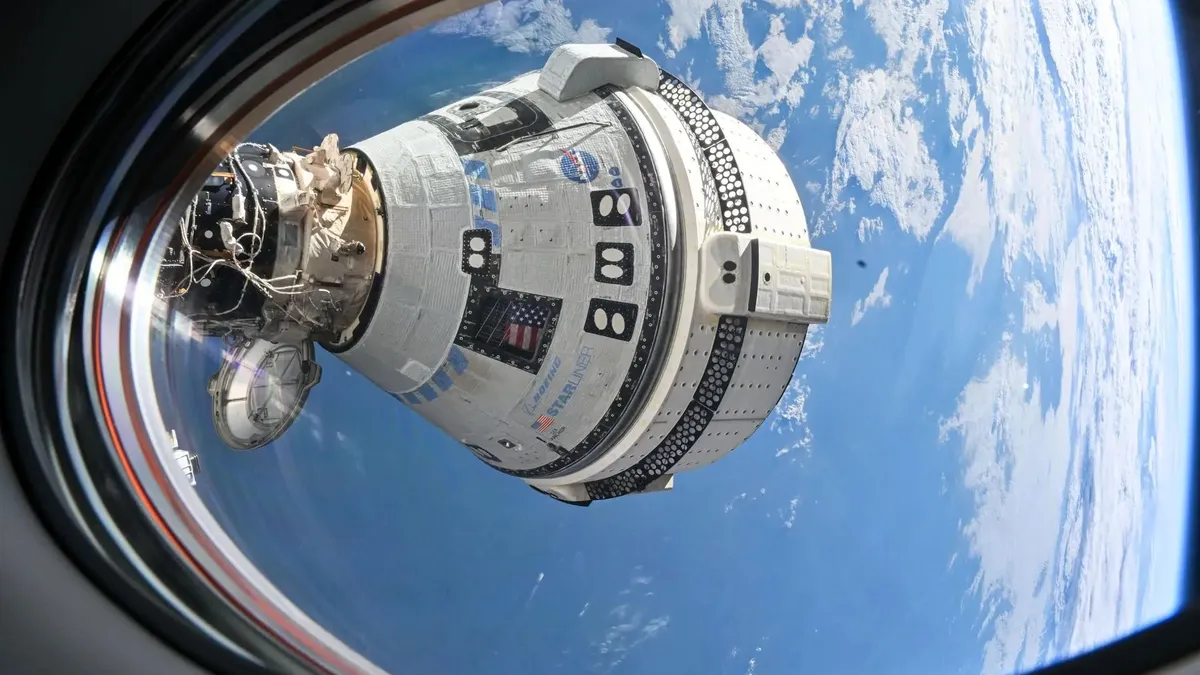
Traffic at the International Space Station (ISS) is unprecedentedly busy, with spacecraft arriving and departing almost every few weeks. On July 14, astronauts from the private Ax-4 mission undocked from the ISS, making way for SpaceX's upcoming Crew-11 mission for NASA. Earlier, a SpaceX Cargo Dragon departed the station at the end of May, while a Russian Progress cargo spacecraft successfully arrived on July 5. With several other spacecraft scheduled to launch by the end of the year, the ISS is experiencing one of the busiest periods in its operational history, especially as recent years have seen a marked increase in activity.
Amid this flurry of space traffic, Boeing's Starliner is noticeably absent for the remainder of 2025. The latest updates regarding the stalled spacecraft revealed that a suite of tests is set to take place this summer at NASA's White Sands Test Facility in New Mexico. Originally, NASA and Boeing aimed to complete these tests and implement necessary fixes to prepare Starliner for another flight by the end of this year. However, that timeline has slipped, with current goals now set for an early 2026 launch.
Starliner completed its first astronaut mission, known as the Crew Flight Test (CFT), in June 2024, transporting NASA astronauts Sunita Suni Williams and Butch Wilmore to the ISS for a mission expected to last approximately a week. This was not Starliner's first flight, as it had previously completed two uncrewed orbital flight tests (OFTs)—one in 2019 and another in 2022. While OFT-1 experienced a software anomaly that prevented docking with the ISS, OFT-2 rectified these issues and successfully docked with the station, paving the way for the spacecraft's first crewed mission.
During the CFT, astronauts Williams and Wilmore conducted a series of maneuvering tests before docking with the ISS. Unfortunately, the mission faced significant challenges as Starliner experienced multiple helium leaks traced back to components within its protective enclosures, known as doghouses. Additionally, five out of 28 RCS thrusters failed during the flight. Due to these complications, Williams and Wilmore's stay aboard the ISS was extended multiple times while NASA and Boeing worked to troubleshoot the issues. Ultimately, it was decided to return Starliner to Earth uncrewed.
Starliner's uncrewed return occurred without incident in September, successfully parachuting down in White Sands, New Mexico. NASA later confirmed that the crew would have been safe to return on Starliner; however, caution prevailed. In the meantime, Williams and Wilmore transitioned to the ISS's long-term crew rotation as part of SpaceX's Crew-9 mission, returning with their fellow Crew-9 astronauts aboard SpaceX's Crew Dragon Freedom in March, after an extended mission of over eight months.
Following the issues encountered during the CFT, NASA and Boeing conducted thorough analyses of the problems within Starliner's doghouses. NASA's commercial crew program manager Steve Stich provided insights into the ongoing evaluations during a July 10 press briefing. He explained that the seal surrounding the oxidizer exposure was not robust enough and that various materials are being tested to improve that seal, thereby mitigating future leaks.
To better understand temperature fluctuations within the doghouses, NASA is performing a series of pulse trains designed to simulate various thruster burns. These tests aim to inform thermal models for an integrated doghouse test scheduled to commence near the end of next month. Improvements such as thermal modifications have already been made, including the addition of barriers to prevent heat from the OMAC thrusters from radiating back into the housing cluster.
As for Starliner's next flight, it appears that 2025 is no longer a viable target. NASA is now focused on a potential early 2026 launch, with hopes of initiating crew rotation flights no sooner than the end of next year. NASA typically schedules two launches per year for crew rotations, each lasting six to eight months, which means that if Starliner’s operational mission is slated for late 2026, it will likely begin with a cargo flight without astronauts aboard.
Despite the setbacks faced by Starliner, NASA remains committed to its role in human spaceflight objectives in low Earth orbit (LEO). Both Starliner and SpaceX's Crew Dragon were developed under NASA's Commercial Crew Transportation Capability contracts, aiming to establish redundant access to LEO through at least 2030. SpaceX has successfully transitioned from cargo to crewed flights, with its eleventh operational crew launch planned for the end of July.
Even amidst SpaceX's achievements, NASA acknowledges Starliner's critical role. NASA astronaut Mike Fincke emphasized the importance of multiple pathways to access space, stating, "The more ways we have to get to space, the more people can fly in space, the better it is for our country." Fincke, who was originally slated to pilot Starliner-1, has undergone extensive training on the Boeing spacecraft and expressed enthusiasm about flying aboard Starliner once it is ready for crewed missions.